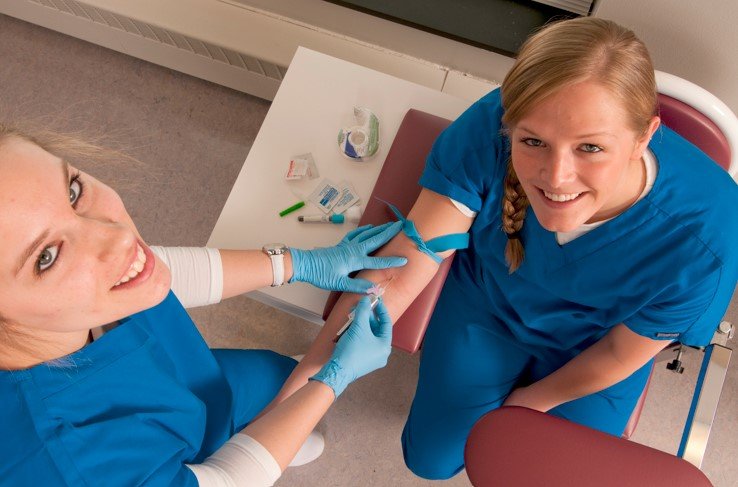Optimizing Hospital Protocols for Selecting and Evaluating Medical Supplies and Equipment in the United States
Summary
- Hospitals in the United States follow strict protocols when selecting and evaluating new medical supplies and equipment.
- These protocols help ensure that hospitals choose high-quality products that meet safety and efficacy standards.
- The evaluation process involves thorough research, testing, and collaboration between hospital staff and suppliers.
Introduction
Hospital supply and equipment management are crucial for ensuring that healthcare facilities have access to the necessary tools and resources to provide quality care to patients. When it comes to selecting and evaluating new medical supplies and equipment, hospitals in the United States follow specific protocols to ensure that they make informed decisions that benefit both patients and Healthcare Providers.
Regulatory Standards
Before a hospital can purchase and use new medical supplies and equipment, the products must meet regulatory standards set by organizations such as the Food and Drug Administration (FDA) and the Centers for Medicare and Medicaid Services (CMS). These standards ensure that the products are safe, effective, and comply with all necessary Regulations.
FDA Approval
The FDA is responsible for regulating a wide range of medical products, including drugs, medical devices, and equipment. Before a new medical device can be marketed and sold in the United States, it must go through a rigorous approval process conducted by the FDA. This process involves testing the device for safety and efficacy and evaluating its performance in clinical trials.
CMS Reimbursement
In addition to FDA approval, hospitals must also consider whether new medical supplies and equipment are eligible for Reimbursement by CMS. CMS sets guidelines for Reimbursement for medical services and products provided to Medicare and Medicaid beneficiaries. Hospitals must ensure that the products they purchase meet CMS Reimbursement criteria to avoid potential financial implications.
Evaluation Process
When evaluating new medical supplies and equipment, hospitals follow a structured process to ensure that they make informed decisions that align with their patient care goals and budgetary constraints. This process typically involves the following steps:
- Needs Assessment: Hospitals identify specific needs or gaps in their current supply and equipment inventory that require new products to address.
- Research: Hospitals conduct research to identify potential suppliers and products that meet their identified needs. This research may involve consulting industry publications, attending trade shows, and seeking recommendations from other healthcare facilities.
- Product Demonstrations: Once hospitals have narrowed down their list of potential suppliers and products, they may request product demonstrations or samples to evaluate the quality and functionality of the products.
- Clinical Trials: In some cases, hospitals may conduct their clinical trials to test the effectiveness and safety of new medical supplies and equipment in a controlled healthcare setting.
- Consultation: Hospital staff, including clinicians, procurement specialists, and administrators, collaborate with suppliers to discuss product specifications, pricing, and other relevant details before making a final decision.
- Vendor Selection: Hospitals select a vendor based on factors such as product quality, pricing, warranty, and customer support. The chosen vendor then provides the necessary training and support to hospital staff to ensure the successful implementation of the new supplies and equipment.
Quality Assurance
Ensuring the quality of new medical supplies and equipment is essential to safeguarding patient safety and improving healthcare outcomes. Hospitals implement quality assurance measures to monitor the performance and reliability of the products they purchase. These measures may include:
- Product Testing: Hospitals conduct routine product testing to evaluate the performance and durability of new medical supplies and equipment.
- Feedback Mechanisms: Hospital staff provide feedback on the usability and effectiveness of new products to suppliers to address any issues or concerns promptly.
- Compliance Audits: Hospitals perform regular compliance audits to ensure that new medical supplies and equipment meet regulatory standards and are being used appropriately by staff.
- Outcome Monitoring: Hospitals track patient outcomes and satisfaction levels related to the use of new supplies and equipment to assess their impact on the quality of care provided.
Conclusion
Overall, hospitals in the United States adhere to strict protocols when selecting and evaluating new medical supplies and equipment to ensure that they meet regulatory standards, align with patient care goals, and provide value for the organization. By following a structured evaluation process and implementing quality assurance measures, hospitals can make informed decisions that benefit both patients and Healthcare Providers.

Disclaimer: The content provided on this blog is for informational purposes only, reflecting the personal opinions and insights of the author(s) on the topics. The information provided should not be used for diagnosing or treating a health problem or disease, and those seeking personal medical advice should consult with a licensed physician. Always seek the advice of your doctor or other qualified health provider regarding a medical condition. Never disregard professional medical advice or delay in seeking it because of something you have read on this website. If you think you may have a medical emergency, call 911 or go to the nearest emergency room immediately. No physician-patient relationship is created by this web site or its use. No contributors to this web site make any representations, express or implied, with respect to the information provided herein or to its use. While we strive to share accurate and up-to-date information, we cannot guarantee the completeness, reliability, or accuracy of the content. The blog may also include links to external websites and resources for the convenience of our readers. Please note that linking to other sites does not imply endorsement of their content, practices, or services by us. Readers should use their discretion and judgment while exploring any external links and resources mentioned on this blog.

